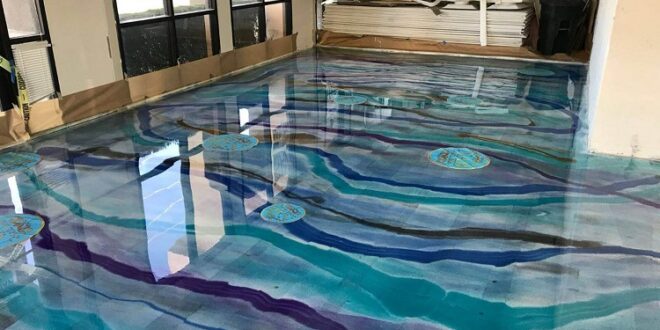Take a walk through a serious commercial warehouses or a factory, and you’ll find a super-smooth, glossy surface underfoot. It’s durable, it’s easily maintained, it resists staining it looks great; in short it ticks just about every box. It’s epoxy resin, or polyurethane flooring, which is a leading floor coating alternative to floor paint.
Let’s take a closer look at this transformative technology, and how to take care of it when it’s installed in your warehouse.
Benefits of Epoxy
Epoxy resin works in a simple way. It’s mixed with a special catalyst, which causes it to ‘cure’ into solid form. Before this has a chance to happen, it’s poured across a flat surface. The substance spreads across to fill every available crack and crevice, but, thanks to gravity, the surface is kept super-smooth. The process is extremely quick, which means that businesses don’t have to stop their operations for longer than a few days.
This smoothness means that the surface can be easily wiped or mopped clean at the end of the day. There aren’t any tiny imperfections to worry about, and so a mop that’s soaked in soapy water will just glide over the surface.
If you’re regularly using machinery to move around the warehouse or factory floor, then the smooth epoxy surface will also help to reduce wear and tear on that machinery. It’ll also reduce potential trip and slip hazards.
The glossy nature of the flooring means that light distribution around the warehouse is vastly improved, which can lower your energy costs and allow for greater visibility. There’s also the possibility of using different colours of epoxy to convey messages to your staff and customers. You might colour code different areas of the warehouse floor, and create one-way signage.
Cleaning an Epoxy Floor
Epoxy might be resistant to physical impact, but it’s still vulnerable to corrosion when harsh, abrasive or acidic chemicals are used to clean it. The same applies to bare brushes, whose bristles can scratch the surface. We’re talking, after all, about an enormous sheet of plastic. Even small nicks and scratches can accumulate and take away the sheen of the floor if they accumulate over weeks and months after constant daily brushing. This applies also to scrapers, or sponges with an abrasive scouring pad on the other side.
It’s vital that loose dust and other particulates are regularly removed from the surface. This ensures that those tiny bits of grit aren’t steadily ground into the surface. This can be done using a soft dust mop or a vacuum cleaner with the appropriate attachment.
If a particular spot needs to be cleaned after a spillage, simply vacuum up the liquid along with any dirt, and mop the affected area afterwards.
 HammBurg Be informed with latest news, reviews, entertainment, lifestyle tips, and much more.
HammBurg Be informed with latest news, reviews, entertainment, lifestyle tips, and much more.




